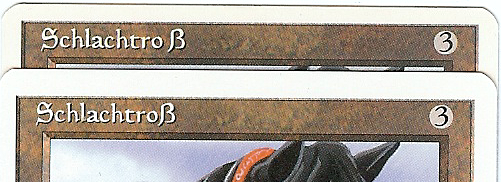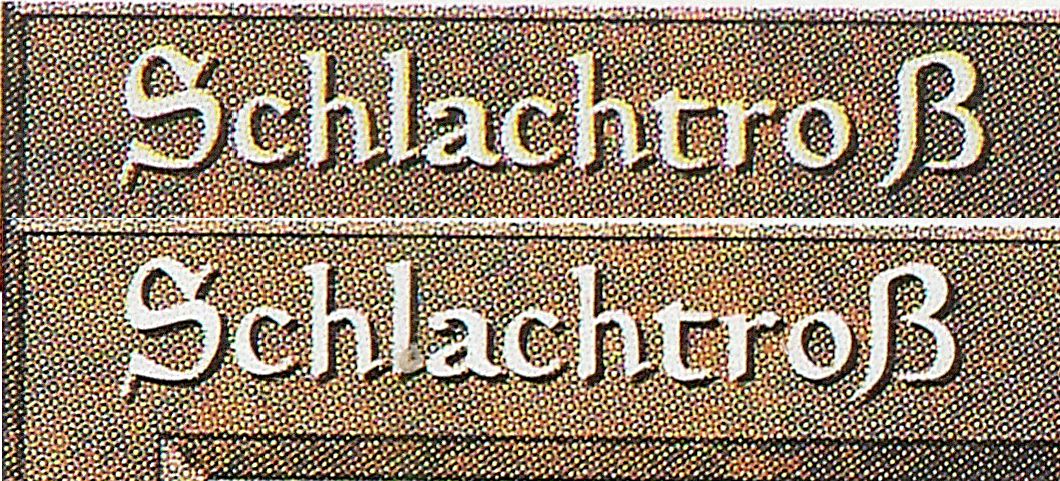| At first glance, the cards look identical. Same picture, same text, white border, copyright 1995. However, the German Revised (on the left) is distinctly different than its German Fourth counterpart (on the right). |

|

|
|
|
If you look closer at the cards' titles, you will notice that the ▀ symbol at the end of the card name --which marginally looks like a Greek beta-- is offset from the word on the German Revised card (on the top); on the German Fourth card (on the bottom), the ▀ symbol is much closer to the preceding letter. Known as a sharp s, its particular placement is the third easiest way to determine the edition (next to the i difference and the u difference). This difference in type setting between the two editions makes it possible to distinguish 2 of the 306 German Revised cards. |

|
||
|
Here is a close-up of just the titles to help you identify the sharp s difference. |

|
||
|
Here is a zoomed-in higher resolution scan of the two Ebony Horses (German Revised on the top, German Fourth on the bottom). |

|
||
| As an etymological aside, the sharp s has undergone a severe deprecation in the German language in the past 30 years and will probably disappear from written German in the next 20 years (replaced by a double s). Magic cards still display German titles with the sharp s, but only in the middle of the word; German titles that earlier ended with the sharp s (like the German Revised Der Kolo▀ von Sardia), are now printed with a trailing ss (like the German Mirrodin Besieged Schandstahl-Koloss). This change first appeared in the ??? edition. I believe it is only a matter of time before it is replaced completely. Perhaps in the Return to Kamigawa edition? | |||